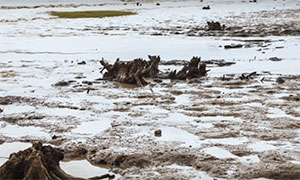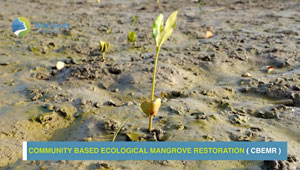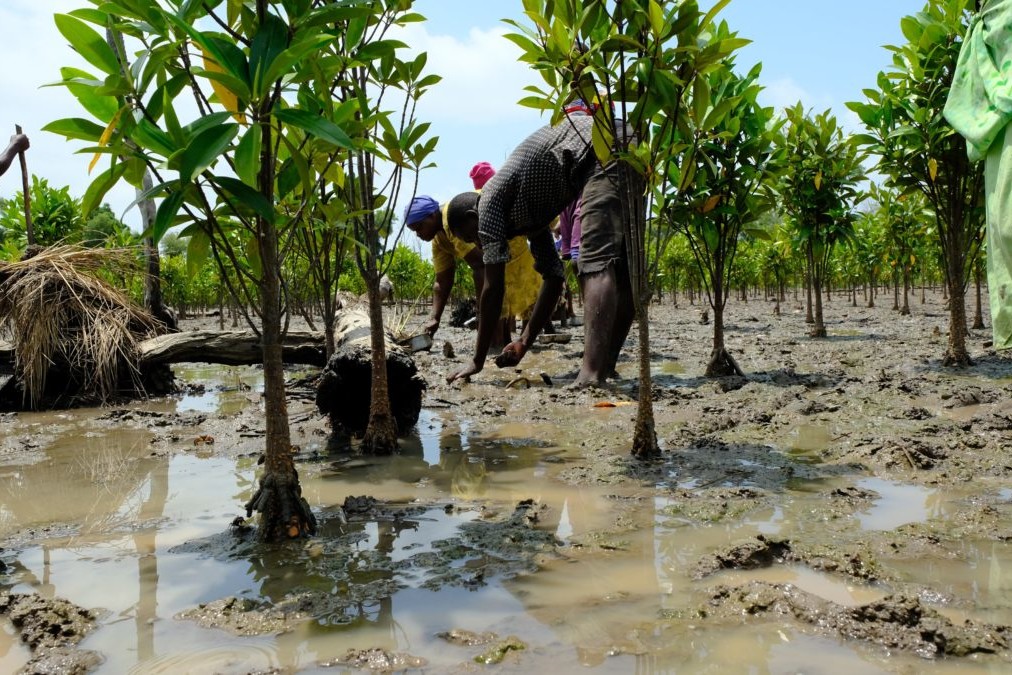The MAP News
|
|
FEATURED STORYA natural treasure under threat
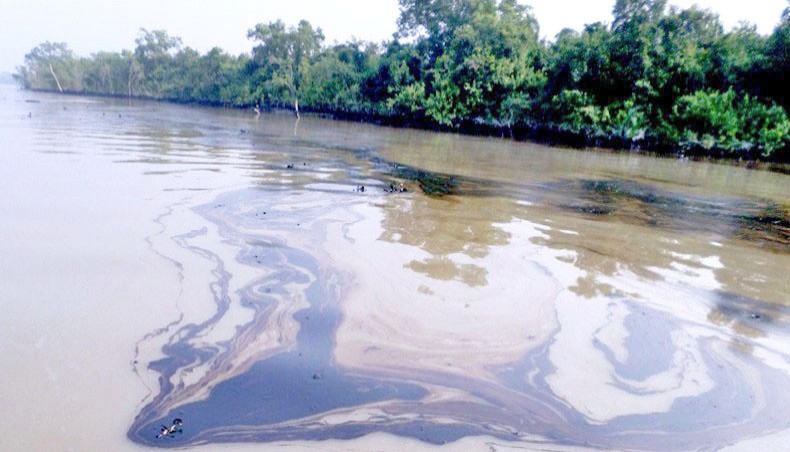 BANGLADESH - MANGROVES are one of Earth’s most unique and endangered natural habitats. Mangroves are unique and diverse ecosystems that grow in the intertidal zones of tropical and subtropical regions. They provide food, extreme weather protection and livelihoods for millions while harbouring incredible biodiversity, building coastal resilience and acting as immense carbon sinks. Therefore, mangrove conservation and restoration are powerful strategies to combat climate change. However, despite their importance, mangroves face severe threats and challenges from human activities and natural disasters. Deforestation, overexploitation, pollution and climate change are some factors that alarmingly degrade and destroy these forests. For example, Bangladesh has lost about 20 per cent of its mangrove area in the last 40 years due to shrimp farming, logging and land conversion. The mangrove ecosystem in Bangladesh, one of the world’s largest and most productive mangrove regions, urgently needs our attention and action. With coastal communities already facing the impacts of a changing climate, we need to turbocharge our investment in conserving and restoring mangroves as nature-based solutions to adapt to this changing planet. Today, on International Day for the Conservation of the Mangrove Ecosystem, let’s explore how we can save the mangroves in Bangladesh. BANGLADESH - MANGROVES are one of Earth’s most unique and endangered natural habitats. Mangroves are unique and diverse ecosystems that grow in the intertidal zones of tropical and subtropical regions. They provide food, extreme weather protection and livelihoods for millions while harbouring incredible biodiversity, building coastal resilience and acting as immense carbon sinks. Therefore, mangrove conservation and restoration are powerful strategies to combat climate change. However, despite their importance, mangroves face severe threats and challenges from human activities and natural disasters. Deforestation, overexploitation, pollution and climate change are some factors that alarmingly degrade and destroy these forests. For example, Bangladesh has lost about 20 per cent of its mangrove area in the last 40 years due to shrimp farming, logging and land conversion. The mangrove ecosystem in Bangladesh, one of the world’s largest and most productive mangrove regions, urgently needs our attention and action. With coastal communities already facing the impacts of a changing climate, we need to turbocharge our investment in conserving and restoring mangroves as nature-based solutions to adapt to this changing planet. Today, on International Day for the Conservation of the Mangrove Ecosystem, let’s explore how we can save the mangroves in Bangladesh.GLOBAL UNESCO - An Inside Look at the Beauty and Benefits of Mangroves
 GLOBAL - Mangroves are among the most misunderstood ecosystems. The coastal forests are sometimes perceived as “dirty” or “dead areas”, wasted land that could be cleared in favour of sandy beaches or other developments. These myths about mangroves could not be farther from the truth. They are the only trees that thrive in salty waters and improve water quality by filtering out nutrients and sediments. They are also teeming with life: more than 1,500 plant and animal species depend on mangroves. This includes fish and birds who use the shallow waters beneath mangrove trees as nurseries. Research now indicates that mangroves are also critical for larger mammals, such as monkeys, sloths, tigers, hyenas and African wild dogs. But mangroves are threatened. Worldwide, a fifth of them have already disappeared. In some places around the world, such as the Irrawaddy Delta, over 80 per cent of mangrove forest has been lost since the 1970s! The main driver of mangrove loss is coastal development, when mangrove forests are cleared to make way for buildings and fish or shrimp farms. The plight of these vital ecosystems were in the spotlight on 26 July, World Mangrove Day. Mangrove Action Project is running its ninth annual Mangrove Photography Awards. The competition invites photographers of all levels around the world to contribute their images to celebrate the beauty and diversity of mangrove forests and inspire action to conserve them GLOBAL - Mangroves are among the most misunderstood ecosystems. The coastal forests are sometimes perceived as “dirty” or “dead areas”, wasted land that could be cleared in favour of sandy beaches or other developments. These myths about mangroves could not be farther from the truth. They are the only trees that thrive in salty waters and improve water quality by filtering out nutrients and sediments. They are also teeming with life: more than 1,500 plant and animal species depend on mangroves. This includes fish and birds who use the shallow waters beneath mangrove trees as nurseries. Research now indicates that mangroves are also critical for larger mammals, such as monkeys, sloths, tigers, hyenas and African wild dogs. But mangroves are threatened. Worldwide, a fifth of them have already disappeared. In some places around the world, such as the Irrawaddy Delta, over 80 per cent of mangrove forest has been lost since the 1970s! The main driver of mangrove loss is coastal development, when mangrove forests are cleared to make way for buildings and fish or shrimp farms. The plight of these vital ecosystems were in the spotlight on 26 July, World Mangrove Day. Mangrove Action Project is running its ninth annual Mangrove Photography Awards. The competition invites photographers of all levels around the world to contribute their images to celebrate the beauty and diversity of mangrove forests and inspire action to conserve themAFRICA
Mangrove cure for dire climate change effect
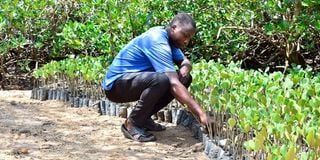 MOMBASA - It is World Mangrove Day today, the annual review of conservation of the high-value but threatened tree species. Mangrove is a ecosystem heavyweight, owing to its notable contribution to environmental conservation and the improvement of livelihoods among marine communities. Mangrove forests account for 0.4 per cent of the global forest cover. For decades, they have been a source of livelihood for coastal residents. But every year, one per cent of mangroves are lost, mostly to human practices like overfishing, land use changes, coastal development and agriculture. UNEP blames a quarter of the loss on farming on the coastline. Since 1985, Kenya has suffered a 70 per cent decline of mangrove in the coastal region, mostly due to overharvesting of their resources to meet increasing human needs, hence the increased vulnerability of residents to effects of climate change. Besides their incredible adaptation to an environment considered unfit for trees, mangrove forests are critical for protecting coastlines, endangered and threatened species and people’s livelihoods and even helping to combat climate change effects. Mangrove forests are a direct essential connection between life in the ocean and on land. Millions in the tropics and subtropics depend on them for wood, medicine, livestock feeds, honey and others. MOMBASA - It is World Mangrove Day today, the annual review of conservation of the high-value but threatened tree species. Mangrove is a ecosystem heavyweight, owing to its notable contribution to environmental conservation and the improvement of livelihoods among marine communities. Mangrove forests account for 0.4 per cent of the global forest cover. For decades, they have been a source of livelihood for coastal residents. But every year, one per cent of mangroves are lost, mostly to human practices like overfishing, land use changes, coastal development and agriculture. UNEP blames a quarter of the loss on farming on the coastline. Since 1985, Kenya has suffered a 70 per cent decline of mangrove in the coastal region, mostly due to overharvesting of their resources to meet increasing human needs, hence the increased vulnerability of residents to effects of climate change. Besides their incredible adaptation to an environment considered unfit for trees, mangrove forests are critical for protecting coastlines, endangered and threatened species and people’s livelihoods and even helping to combat climate change effects. Mangrove forests are a direct essential connection between life in the ocean and on land. Millions in the tropics and subtropics depend on them for wood, medicine, livestock feeds, honey and others. AMERICAS Yucatan Mangrove Forests at Risk Due to Urban Territorial Disorder
 MEXICO - Senator from Yucatan Raúl Paz issued an urgent call to protect the mangrove forests in Yucatán as a fundamental measure to preserve the environment and ensure sustainable development in the region. The legislator expressed concern about the serious threat faced by the mangrove forests in different areas of the state, resulting from improper urban development and real estate projects along the Yucatán Peninsula. On the occasion of the International Day for the Protection of the Mangrove Ecosystem, he urged society to get involved and demand from the authorities their protection and conservation efforts. Paz Alonzo highlighted the importance of mangrove forests as regulators of water quality along the coasts, as well as providers of fishing zones, habitats for various plant and animal species, and essential for food security in the region. Furthermore, he emphasized their crucial role in mitigating the effects of climate change in places like Yucatán, an area exposed to hurricanes. According to official data, Mexico possesses 5 percent of the world’s total mangrove forests, ranking the country in 4th place among 125 countries and territories with this type of wetland. However, it is estimated that thousands of hectares of this ecosystem have been lost in the country in recent years. MEXICO - Senator from Yucatan Raúl Paz issued an urgent call to protect the mangrove forests in Yucatán as a fundamental measure to preserve the environment and ensure sustainable development in the region. The legislator expressed concern about the serious threat faced by the mangrove forests in different areas of the state, resulting from improper urban development and real estate projects along the Yucatán Peninsula. On the occasion of the International Day for the Protection of the Mangrove Ecosystem, he urged society to get involved and demand from the authorities their protection and conservation efforts. Paz Alonzo highlighted the importance of mangrove forests as regulators of water quality along the coasts, as well as providers of fishing zones, habitats for various plant and animal species, and essential for food security in the region. Furthermore, he emphasized their crucial role in mitigating the effects of climate change in places like Yucatán, an area exposed to hurricanes. According to official data, Mexico possesses 5 percent of the world’s total mangrove forests, ranking the country in 4th place among 125 countries and territories with this type of wetland. However, it is estimated that thousands of hectares of this ecosystem have been lost in the country in recent years.
Brazilian landfill restored to mangrove 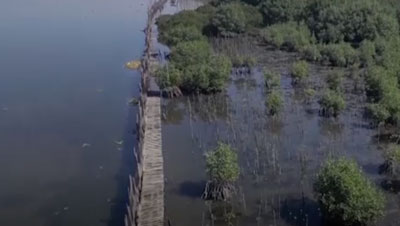 BRAZIL - A landfill in the Guanabara Bay of Rio de Janeiro, Brazil, has been restored to mangroves, a boost for the area's flora and fauna. The 600,000 square metres recovered was part of one of the largest landfills in Latin America. From the early 1970s to 2012, the dump in the Jardim Gramacho neighbourhood received around 80 million tonnes of trash, polluting the land and the waters of the Guanabara Bay. The landfill was deactivated 11 years ago and, through an environmental project led by Rio's Municipal Cleaning Company and a private company, the area has been replaced by greenery. The project began by planting 10 hectares of mangrove plants and now has 60 hectares. It is the largest mangrove area of the bay. Mangrove plants are the most suitable for use in environmental restoration, due to their impressive ability to store so-called "blue carbon", a term used to refer to the carbon of marine and coastal ecosystems, in contrast to the "green carbon" associated with forest and other terrestrial ecosystems. According to estimates from a study published in early 2022, one hectare of mangrove can store between two and four times more carbon than the same hectare of another biome - including the Amazon rainforest. BRAZIL - A landfill in the Guanabara Bay of Rio de Janeiro, Brazil, has been restored to mangroves, a boost for the area's flora and fauna. The 600,000 square metres recovered was part of one of the largest landfills in Latin America. From the early 1970s to 2012, the dump in the Jardim Gramacho neighbourhood received around 80 million tonnes of trash, polluting the land and the waters of the Guanabara Bay. The landfill was deactivated 11 years ago and, through an environmental project led by Rio's Municipal Cleaning Company and a private company, the area has been replaced by greenery. The project began by planting 10 hectares of mangrove plants and now has 60 hectares. It is the largest mangrove area of the bay. Mangrove plants are the most suitable for use in environmental restoration, due to their impressive ability to store so-called "blue carbon", a term used to refer to the carbon of marine and coastal ecosystems, in contrast to the "green carbon" associated with forest and other terrestrial ecosystems. According to estimates from a study published in early 2022, one hectare of mangrove can store between two and four times more carbon than the same hectare of another biome - including the Amazon rainforest.ASIA High-level international forum on mangrove conservation concludes in China
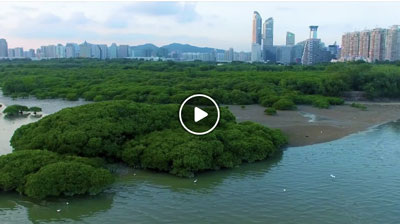 CHINA - A high-level international forum on mangrove conservation concluded on Thursday in Shenzhen City, south China's Guangdong Province. The two-day forum aimed to galvanize global consensus and efforts for mangrove protection. 160 representatives from 29 countries, the secretariat of the Ramsar Convention on Wetlands and relevant international organizations such as the Food and Agriculture Organization of the United Nations participated in the forum. A joint statement was adopted on Wednesday morning, which encourages governments to incorporate the protection and sustainable use of mangroves into national plans to achieve strong ecological, economic and social benefits. Yang Qiong, Senior engineer of Guangdong Neilingding Futian National Nature Reserve Administration Bureau said "we hope that through such international exchanges and cooperation, we can share our conservation and management experience with them, especially some cases of harmonious coexistence between man and nature, city and wetlands in such a megacity." Thanks to China's dedication to ecological protection and restoration, the country's mangrove forest coverage has reached about 29,200 hectares, an increase of some 7,200 hectares from the beginning of the century. CHINA - A high-level international forum on mangrove conservation concluded on Thursday in Shenzhen City, south China's Guangdong Province. The two-day forum aimed to galvanize global consensus and efforts for mangrove protection. 160 representatives from 29 countries, the secretariat of the Ramsar Convention on Wetlands and relevant international organizations such as the Food and Agriculture Organization of the United Nations participated in the forum. A joint statement was adopted on Wednesday morning, which encourages governments to incorporate the protection and sustainable use of mangroves into national plans to achieve strong ecological, economic and social benefits. Yang Qiong, Senior engineer of Guangdong Neilingding Futian National Nature Reserve Administration Bureau said "we hope that through such international exchanges and cooperation, we can share our conservation and management experience with them, especially some cases of harmonious coexistence between man and nature, city and wetlands in such a megacity." Thanks to China's dedication to ecological protection and restoration, the country's mangrove forest coverage has reached about 29,200 hectares, an increase of some 7,200 hectares from the beginning of the century.Villagers donate land for mangrove plantation in Odisha
 INDIA - People in the coastal part of Odisha’s Kendrapara district are to donate land for a mangrove plantation. Mangroves act as bio-shields against sea surge and cyclones. Odisha has 259 square kilometres of mangroves while Kendrapara is home to over 80% of the State’s mangrove forest. According to the Forest Survey of India-2021, Odisha has achieved growth of 8 sq km in mangrove forest area, the highest growth in the country. Over the years, the mangrove forests have been denuded by destructive shrimp culture along the coast. Mangrove forests were cleared for shrimp culture. “The department had called on people to take up plantation of mangroves on private land so that the entire coast is covered in mangrove vegetation. We have received an encouraging response. As of now 10 to 15 hectares of land have been donated by private individuals,” according to Sudharshan G. Yadav, Divisional Forest Officer of Rajnagar Wildlife Division. Mr. Yadav said about 25 people had donated their land. “We have been raising awareness on the importance of mangrove forests on the coast. People too have realized the utility and started working with the department,” said the DFO. Bijay Kabi, an environmentalist, said, “over the past 15 years, we have managed to impress upon residents of two villages to convert common land into mangroves. The result has been very encouraging. Due to the growth of mangrove forests, the grassland has also grown providing fodder to cows.” INDIA - People in the coastal part of Odisha’s Kendrapara district are to donate land for a mangrove plantation. Mangroves act as bio-shields against sea surge and cyclones. Odisha has 259 square kilometres of mangroves while Kendrapara is home to over 80% of the State’s mangrove forest. According to the Forest Survey of India-2021, Odisha has achieved growth of 8 sq km in mangrove forest area, the highest growth in the country. Over the years, the mangrove forests have been denuded by destructive shrimp culture along the coast. Mangrove forests were cleared for shrimp culture. “The department had called on people to take up plantation of mangroves on private land so that the entire coast is covered in mangrove vegetation. We have received an encouraging response. As of now 10 to 15 hectares of land have been donated by private individuals,” according to Sudharshan G. Yadav, Divisional Forest Officer of Rajnagar Wildlife Division. Mr. Yadav said about 25 people had donated their land. “We have been raising awareness on the importance of mangrove forests on the coast. People too have realized the utility and started working with the department,” said the DFO. Bijay Kabi, an environmentalist, said, “over the past 15 years, we have managed to impress upon residents of two villages to convert common land into mangroves. The result has been very encouraging. Due to the growth of mangrove forests, the grassland has also grown providing fodder to cows.”From Natural Barrier To Habitat For Marine Life, Mangroves Play Several Roles, But We Are Failing To Protect Them
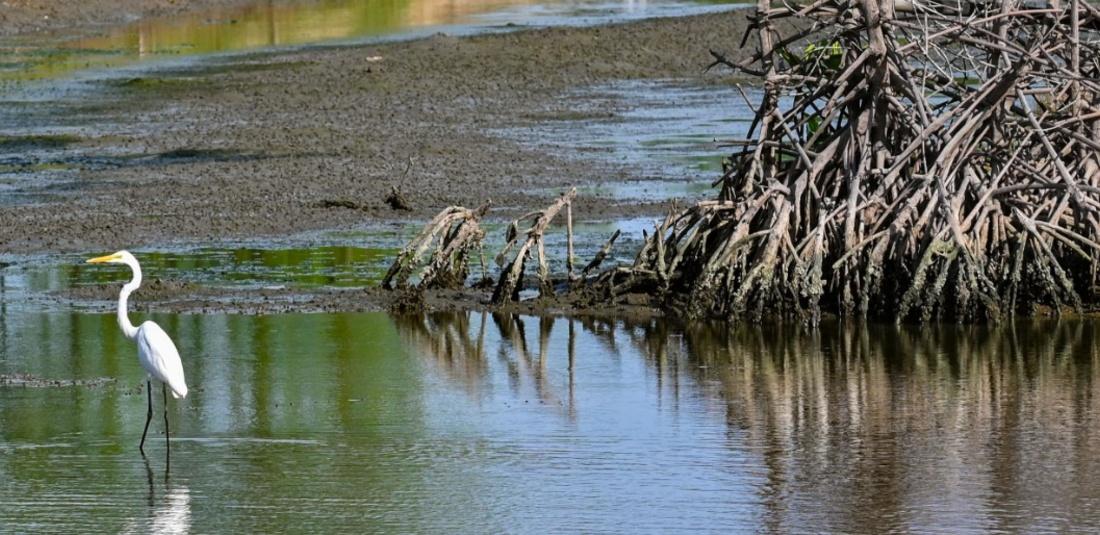 INDIA - Despite the enormous benefits they have to offer, mangroves across the world are facing an ever-increasing existential threat. The biggest risks mangroves face are coastal development, shrimp aquaculture, charcoal farming, and natural disasters. According to the India State of Forest Report 2021, the very dense mangrove cover in the Sunderbans has shrunk by two square kilometres – from 996 sq km to 994 sq km - between 2019 and 2021. The delta had a mangrove cover of 999 sq km in 2017, which had declined by three square kilometres in 2019. And it was 1038 sq km in 2011. In Maharashtra, especially in Mumbai, the loss of Mangroves has been concerning. In 2018, the Bombay High Court said that the destruction of Mangroves offended the fundamental rights of the citizens, and hence it was a mandatory duty of the state and its agencies to protect and preserve the mangroves. In 2005 in its interim orders in the matter, the HC had ordered a ban on hacking or construction on mangrove land and dumping of debris and garbage on such mangrove plots. INDIA - Despite the enormous benefits they have to offer, mangroves across the world are facing an ever-increasing existential threat. The biggest risks mangroves face are coastal development, shrimp aquaculture, charcoal farming, and natural disasters. According to the India State of Forest Report 2021, the very dense mangrove cover in the Sunderbans has shrunk by two square kilometres – from 996 sq km to 994 sq km - between 2019 and 2021. The delta had a mangrove cover of 999 sq km in 2017, which had declined by three square kilometres in 2019. And it was 1038 sq km in 2011. In Maharashtra, especially in Mumbai, the loss of Mangroves has been concerning. In 2018, the Bombay High Court said that the destruction of Mangroves offended the fundamental rights of the citizens, and hence it was a mandatory duty of the state and its agencies to protect and preserve the mangroves. In 2005 in its interim orders in the matter, the HC had ordered a ban on hacking or construction on mangrove land and dumping of debris and garbage on such mangrove plots. Like this newsletter?  Pease consider donating to MAP to keep it going. Giving could never be easier *Articles in this newsletter may mention practices being used and/or show exagerated results being claimed without proof. Stories are presented here in effort to show mangrove related activity around the world and do not necessarily reflect Mangrove Action Project's views or mangrove restoration best-practices. NOTICE
ACTION ALERTSEcuador: Stop land grabbing and racial discrimination for palm oil! SIGN THE PETITIONUGANDA Stop criminalizing pipeline protesters! SIGN THE PETITIONSave Endangered Species From SpaceX
|
|
|
Mangrove Action Project Click here to view past newsletters
|
|
Search News Archive
Saturday, July 29, 2023
MAP News Issue #577 - July 29, 2023
Saturday, July 15, 2023
MAP News Issue #576 - July 15, 2023
The MAP News
|
|
FEATURED STORYMAP’s 22nd Annual Mangrove Art Contest DEADLINE EXTENDED - YOUNG ARTISTS WANTED!
 GLOBAL - Mangrove Action Project (MAP) invites children from around the world to participate in MAP’s 22nd annual Mangrove Art Contest. It is an opportunity for the younger generation to learn about the vital role Mangroves play in the lives of coastal communities and marine life around the world whilst letting them explore their imagination and have fun when creating their pieces of art. The competition is open to all children worldwide, with selected winners published in the 2024 calendar to be distributed internationally to raise awareness of mangrove forest ecology. This colorful calendar has increased in popularity since its first publication in 2002. The 2024 calendar is our 22nd edition. We would like to invite children from your country to join in this fantastic creative and educational competition. It is an opportunity for the younger generation to learn about the vital role Mangroves play in the lives of coastal communities and marine life around the world whilst letting them explore their imagination and have fun when creating their pieces of art.For any questions, contact Monica Gutierrez-Quarto, the international art competition coordinator at: GLOBAL - Mangrove Action Project (MAP) invites children from around the world to participate in MAP’s 22nd annual Mangrove Art Contest. It is an opportunity for the younger generation to learn about the vital role Mangroves play in the lives of coastal communities and marine life around the world whilst letting them explore their imagination and have fun when creating their pieces of art. The competition is open to all children worldwide, with selected winners published in the 2024 calendar to be distributed internationally to raise awareness of mangrove forest ecology. This colorful calendar has increased in popularity since its first publication in 2002. The 2024 calendar is our 22nd edition. We would like to invite children from your country to join in this fantastic creative and educational competition. It is an opportunity for the younger generation to learn about the vital role Mangroves play in the lives of coastal communities and marine life around the world whilst letting them explore their imagination and have fun when creating their pieces of art.For any questions, contact Monica Gutierrez-Quarto, the international art competition coordinator at:mapchildrensmangroveartcontest@gmail.com or visit our website below. GLOBAL Mangrove Photography Awards 2023 Now open for entries!
 GLOBAL - Mangrove Action Project has launched their ninth annual Mangrove Photography Awards. The competition invites photographers of all levels around the world to contribute their images to highlight the beauty and fragility of mangrove ecosystems and inspire conservation action to protect them. Mangroves are one of the world’s most important ecosystems, and one of the most threatened. Today, less than half the world’s original mangrove forest cover remains and the “Mangrove Photography Awards has become a platform to intrigue people about the magnificent ecological role mangroves play in all of our lives", says ambassador Dhritiman Mukherjee. There are six categories that appeal to a range of interests and approaches, including a photojournalism multiple image category, allowing the photographer to tell important mangrove stories. This year’s competition will be judged by conservation photographers Octavio Aburto, Daisy Gilardini and Daniel Kordan. Last year’s competition received over 2000 entries from 68 countries. You can view the winners here. All entries will be celebrated as an online mangrove exhibition on 26th July, World Mangrove Day. The overall winner will be crowned the Mangrove Photographer of the Year, with winners announced for each of the categories, as well as this year’s Young Mangrove Photographer of the Year, in September 2023. GLOBAL - Mangrove Action Project has launched their ninth annual Mangrove Photography Awards. The competition invites photographers of all levels around the world to contribute their images to highlight the beauty and fragility of mangrove ecosystems and inspire conservation action to protect them. Mangroves are one of the world’s most important ecosystems, and one of the most threatened. Today, less than half the world’s original mangrove forest cover remains and the “Mangrove Photography Awards has become a platform to intrigue people about the magnificent ecological role mangroves play in all of our lives", says ambassador Dhritiman Mukherjee. There are six categories that appeal to a range of interests and approaches, including a photojournalism multiple image category, allowing the photographer to tell important mangrove stories. This year’s competition will be judged by conservation photographers Octavio Aburto, Daisy Gilardini and Daniel Kordan. Last year’s competition received over 2000 entries from 68 countries. You can view the winners here. All entries will be celebrated as an online mangrove exhibition on 26th July, World Mangrove Day. The overall winner will be crowned the Mangrove Photographer of the Year, with winners announced for each of the categories, as well as this year’s Young Mangrove Photographer of the Year, in September 2023.Restoring mangroves could help countries meet their climate goals
 GLOBAL - Recently, countries all over the world have been struggling to meet their international climate commitments. Nature-based approaches, such as using the potential of mangroves, seagrasses, or salt marshes to sequester carbon provide a promising solution and could help nations significantly reduce their greenhouse gas emissions and mitigate climate change. However, due to the complexity of calculating how much carbon wetlands and other coastal ecosystems can sequester and where to implement such strategies in order to maximize the co-benefits for the climate, economy, or flood risk reduction, major coastal countries, including the United States, have largely overlooked such “blue carbon strategies.” Now, a team of researchers led by Stanford University has quantified the value of Belize’s coastal mangrove forests in terms of how much carbon they can hold, what value they can add to fisheries and tourism, and what protection they can provide against coastal storms and other risks. Their findings could help chart a path to mitigate climate change, while also boosting the economy and making communities safer. “The U.S. has one of the largest coastlines in the world, and extensive wetlands,” said study lead author Katie Arkema, a senior Earth scientist at the Pacific Northwest National Laboratory, who conducted this research during a fellowship at the Stanford Natural Capital Project. “This paper offers an approach we could use for setting evidence-based climate resilience and economic development goals.” GLOBAL - Recently, countries all over the world have been struggling to meet their international climate commitments. Nature-based approaches, such as using the potential of mangroves, seagrasses, or salt marshes to sequester carbon provide a promising solution and could help nations significantly reduce their greenhouse gas emissions and mitigate climate change. However, due to the complexity of calculating how much carbon wetlands and other coastal ecosystems can sequester and where to implement such strategies in order to maximize the co-benefits for the climate, economy, or flood risk reduction, major coastal countries, including the United States, have largely overlooked such “blue carbon strategies.” Now, a team of researchers led by Stanford University has quantified the value of Belize’s coastal mangrove forests in terms of how much carbon they can hold, what value they can add to fisheries and tourism, and what protection they can provide against coastal storms and other risks. Their findings could help chart a path to mitigate climate change, while also boosting the economy and making communities safer. “The U.S. has one of the largest coastlines in the world, and extensive wetlands,” said study lead author Katie Arkema, a senior Earth scientist at the Pacific Northwest National Laboratory, who conducted this research during a fellowship at the Stanford Natural Capital Project. “This paper offers an approach we could use for setting evidence-based climate resilience and economic development goals.”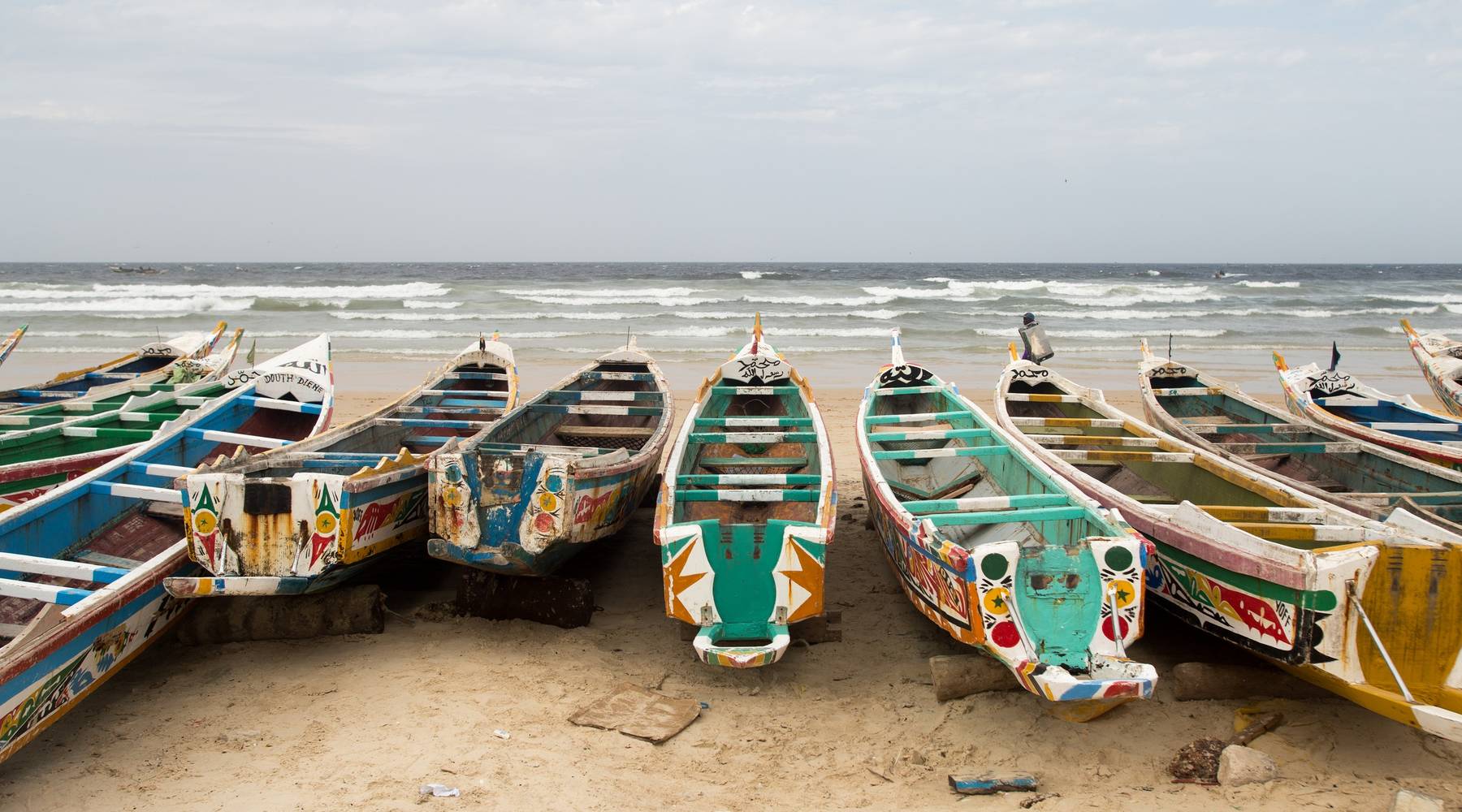 SENEGAL - Around 250 artisanal fishermen, fishmongers and women processors from Joal, Mbour, Ngaparou, Saly, Guéréo, Popenguine and Cayar have joined forces to safeguard their livelihoods. Working together with the Association for the Integrated Management of Natural Resources and the Environment (AGIRE) and the Senegalese Artisanal Fishing Stakeholders' Platform (PAPAS), they spent four hours reforesting three hectares of mangrove in Joal. The equivalent of four football pitches! Despite unstable weather conditions marked by high tides and rough seas, these brave men and women were determined to restore the mangroves. This is an important initiative, not only to rehabilitate and preserve these precious coastal ecosystems, but above all to help restore fish stocks, most of which are being over-exploited. For them, it was essential to commemorate World Oceans Day with concrete, beneficial actions for their future and that of their children. According to Abdou Karim SALL, President of the Senegalese Artisanal Fishing Stakeholders' Platform (PAPAS), the importance of mangroves in preserving fish stocks is well established. For example, it supports the reproduction of more than 35 species of fish. SENEGAL - Around 250 artisanal fishermen, fishmongers and women processors from Joal, Mbour, Ngaparou, Saly, Guéréo, Popenguine and Cayar have joined forces to safeguard their livelihoods. Working together with the Association for the Integrated Management of Natural Resources and the Environment (AGIRE) and the Senegalese Artisanal Fishing Stakeholders' Platform (PAPAS), they spent four hours reforesting three hectares of mangrove in Joal. The equivalent of four football pitches! Despite unstable weather conditions marked by high tides and rough seas, these brave men and women were determined to restore the mangroves. This is an important initiative, not only to rehabilitate and preserve these precious coastal ecosystems, but above all to help restore fish stocks, most of which are being over-exploited. For them, it was essential to commemorate World Oceans Day with concrete, beneficial actions for their future and that of their children. According to Abdou Karim SALL, President of the Senegalese Artisanal Fishing Stakeholders' Platform (PAPAS), the importance of mangroves in preserving fish stocks is well established. For example, it supports the reproduction of more than 35 species of fish. AMERICAS
The hidden cost of farmed shrimp from Ecuador
 ECUADOR - The European Union imports large quantities of farmed and wild shrimp from third countries to meet increasing demand. According to data from EUMOFA, 32% of the EU’s imports of frozen Penaeus shrimp in 2021 came from Ecuador, making it the bloc’s largest supplier. The main European importing countries were Spain (34%), France (20%) and Italy (14%). The free trade agreement that Ecuador signed with China on 3 January 2023, which covers shrimp, will likely boost Ecuador’s shrimp production in the coming years.Shrimp aquaculture in Ecuador has been identified as a main driver of mangrove destruction. According to the National Coordinating Corporation for the Defence of the Mangrove Ecosystem of Ecuador (CCONDEM, from its initials in Spanish), more than 70% of the mangrove ecosystem in Ecuador has been destroyed by shrimp ponds since the establishment of shrimp aquaculture farms. The destruction of mangroves – which have adapted to live and thrive in coastal and salty waters in tropical and subtropical regions – is affecting coastal and traditional communities and is undermining efforts to fight climate change and its impacts. Indeed, coastal and traditional communities have managed mangroves for centuries and live and depend on the resources they generate, including fish and seafood. But these forests are not only highly productive ecosystems which are key for food security; they also act as a buffer against weather events, help prevent erosion, and are efficient at storing carbon. ECUADOR - The European Union imports large quantities of farmed and wild shrimp from third countries to meet increasing demand. According to data from EUMOFA, 32% of the EU’s imports of frozen Penaeus shrimp in 2021 came from Ecuador, making it the bloc’s largest supplier. The main European importing countries were Spain (34%), France (20%) and Italy (14%). The free trade agreement that Ecuador signed with China on 3 January 2023, which covers shrimp, will likely boost Ecuador’s shrimp production in the coming years.Shrimp aquaculture in Ecuador has been identified as a main driver of mangrove destruction. According to the National Coordinating Corporation for the Defence of the Mangrove Ecosystem of Ecuador (CCONDEM, from its initials in Spanish), more than 70% of the mangrove ecosystem in Ecuador has been destroyed by shrimp ponds since the establishment of shrimp aquaculture farms. The destruction of mangroves – which have adapted to live and thrive in coastal and salty waters in tropical and subtropical regions – is affecting coastal and traditional communities and is undermining efforts to fight climate change and its impacts. Indeed, coastal and traditional communities have managed mangroves for centuries and live and depend on the resources they generate, including fish and seafood. But these forests are not only highly productive ecosystems which are key for food security; they also act as a buffer against weather events, help prevent erosion, and are efficient at storing carbon.
Mangroves: nature’s shield against coastal hazards in Savegre Biosphere Reserv
 COSTA RICO - A 2015 UNESCO survey found that people living in 84% of biosphere reserves considered natural hazards to be an important issue and 89% of those surveyed reported their biosphere reserve as being exposed to natural hazards. UNESCO’s global network counted more than 600 biosphere reserves at the time. A follow-up survey two years later showed that 94% of biosphere reserves surveyed were exposed to natural hazards and had suffered significant damage. For example, the Savegre Biosphere Reserve is Costa Rica’s only coastal and marine biosphere reserve. It is exposed to tsunamis, storm surges and flooding from heavy rainfall. These natural hazards threaten not only the population but also a rich and very localised biodiversity that is sometimes endemic to the biosphere reserve. Since 2014, the National Tsunami Warning Centre of Costa Rica (SINAMOT) has recorded over 350 offshore tremors with the potential to generate a tsunami, such as underwater landslides, volcanic eruptions and earthquakes. In addition, Savegre Biosphere Reserve was severely affected by flooding in 2022. Climate-related hazards like flooding are expected to become more frequent and intense in the years to come. Although mangrove forests along the coast can bolster the population’s resilience to both geological and climate-related hazards by breaking the strength of incoming waves, these have become fragmented in Savegre Biosphere Reserve. To address this situation, UNESCO experts worked with national and local emergency agencies, local government officials, Costa Rican experts and at-risk populations from 2021 to 2022 to strengthen the resilience of coastal communities by developing an integrated approach to preparedness for coastal hazards. COSTA RICO - A 2015 UNESCO survey found that people living in 84% of biosphere reserves considered natural hazards to be an important issue and 89% of those surveyed reported their biosphere reserve as being exposed to natural hazards. UNESCO’s global network counted more than 600 biosphere reserves at the time. A follow-up survey two years later showed that 94% of biosphere reserves surveyed were exposed to natural hazards and had suffered significant damage. For example, the Savegre Biosphere Reserve is Costa Rica’s only coastal and marine biosphere reserve. It is exposed to tsunamis, storm surges and flooding from heavy rainfall. These natural hazards threaten not only the population but also a rich and very localised biodiversity that is sometimes endemic to the biosphere reserve. Since 2014, the National Tsunami Warning Centre of Costa Rica (SINAMOT) has recorded over 350 offshore tremors with the potential to generate a tsunami, such as underwater landslides, volcanic eruptions and earthquakes. In addition, Savegre Biosphere Reserve was severely affected by flooding in 2022. Climate-related hazards like flooding are expected to become more frequent and intense in the years to come. Although mangrove forests along the coast can bolster the population’s resilience to both geological and climate-related hazards by breaking the strength of incoming waves, these have become fragmented in Savegre Biosphere Reserve. To address this situation, UNESCO experts worked with national and local emergency agencies, local government officials, Costa Rican experts and at-risk populations from 2021 to 2022 to strengthen the resilience of coastal communities by developing an integrated approach to preparedness for coastal hazards.One of mangroves’ biggest strengths lies in their ability to capture and store carbon
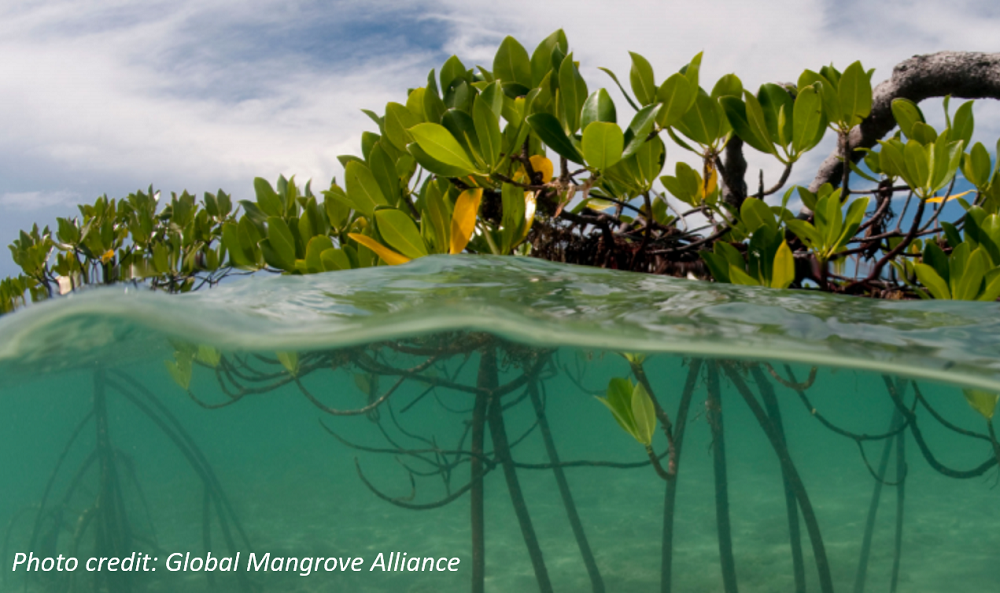 GUYANA - Our Head of State has yet again spoken eloquently on a very pertinent issue, that of the mangrove situation in Guyana. The occasion was the signing of an agreement between the Government of Guyana and the European Union (EU), to establish a comprehensive programme to protect and manage the invaluable mangroves in Guyana. The word from President Ali is that “We have committed to expanding the protected area system from 8.3 per cent to 17 per cent, then eventually to 30 per cent. And these are targets that we are aggressively working towards. These are targets that are integrated into our planning framework, and our policymaking framework. This amounted to Guyana’s policy framework, that prioritises environmental protection, embracing climate-smart approaches, and harnessing the country’s rich natural resources to improve livelihoods and foster economic opportunities, and where mangroves are concerned, we need to internalise that mangroves help to mitigate climate change and help people and nature adapt correspondingly.” Let me remind all that although mangroves make up less than one per cent of all tropical forests around the world, they have a critical role in mitigating climate change. GUYANA - Our Head of State has yet again spoken eloquently on a very pertinent issue, that of the mangrove situation in Guyana. The occasion was the signing of an agreement between the Government of Guyana and the European Union (EU), to establish a comprehensive programme to protect and manage the invaluable mangroves in Guyana. The word from President Ali is that “We have committed to expanding the protected area system from 8.3 per cent to 17 per cent, then eventually to 30 per cent. And these are targets that we are aggressively working towards. These are targets that are integrated into our planning framework, and our policymaking framework. This amounted to Guyana’s policy framework, that prioritises environmental protection, embracing climate-smart approaches, and harnessing the country’s rich natural resources to improve livelihoods and foster economic opportunities, and where mangroves are concerned, we need to internalise that mangroves help to mitigate climate change and help people and nature adapt correspondingly.” Let me remind all that although mangroves make up less than one per cent of all tropical forests around the world, they have a critical role in mitigating climate change.ASIA Just four pupils left: how the sea rose up on a Thai village
 THAILAND - From the corridor of Khun Samut school, it’s clear how far inwards the sea has crept. In the distance, beyond the still waters of neighbouring shrimp farms, sticks can be seen poking out of the blue. They were once electricity poles, powering the parts of the village that have since been submerged in the Bay of Bangkok. Over recent decades, Ban Khun Samut Chin, a coastal village in Thailand’s Samut Prakan province, about 10km from the outskirts of Bangkok, has been slowly swallowed by the sea. The school, which is elevated on concrete stilts, has already been forced to retreat twice. Families have repeatedly moved their homes. Many have left altogether after finding work elsewhere. The population is getting smaller and smaller. At Khun Samut school there are now just four students. On days like today, when classmates are absent, this can mean there is only one student in each classroom. At the school, students are taught about issues such as the climate crisis, and take trips out to learn about conservation and understand the history of the village. “The school used to be out in the sea,” Napat says. “Mangrove is very important to plant because it will stop the waves,” he adds. THAILAND - From the corridor of Khun Samut school, it’s clear how far inwards the sea has crept. In the distance, beyond the still waters of neighbouring shrimp farms, sticks can be seen poking out of the blue. They were once electricity poles, powering the parts of the village that have since been submerged in the Bay of Bangkok. Over recent decades, Ban Khun Samut Chin, a coastal village in Thailand’s Samut Prakan province, about 10km from the outskirts of Bangkok, has been slowly swallowed by the sea. The school, which is elevated on concrete stilts, has already been forced to retreat twice. Families have repeatedly moved their homes. Many have left altogether after finding work elsewhere. The population is getting smaller and smaller. At Khun Samut school there are now just four students. On days like today, when classmates are absent, this can mean there is only one student in each classroom. At the school, students are taught about issues such as the climate crisis, and take trips out to learn about conservation and understand the history of the village. “The school used to be out in the sea,” Napat says. “Mangrove is very important to plant because it will stop the waves,” he adds.World’s largest mangrove forest, the Sundarbans, both awes and stimulates awareness of the area’s fragility 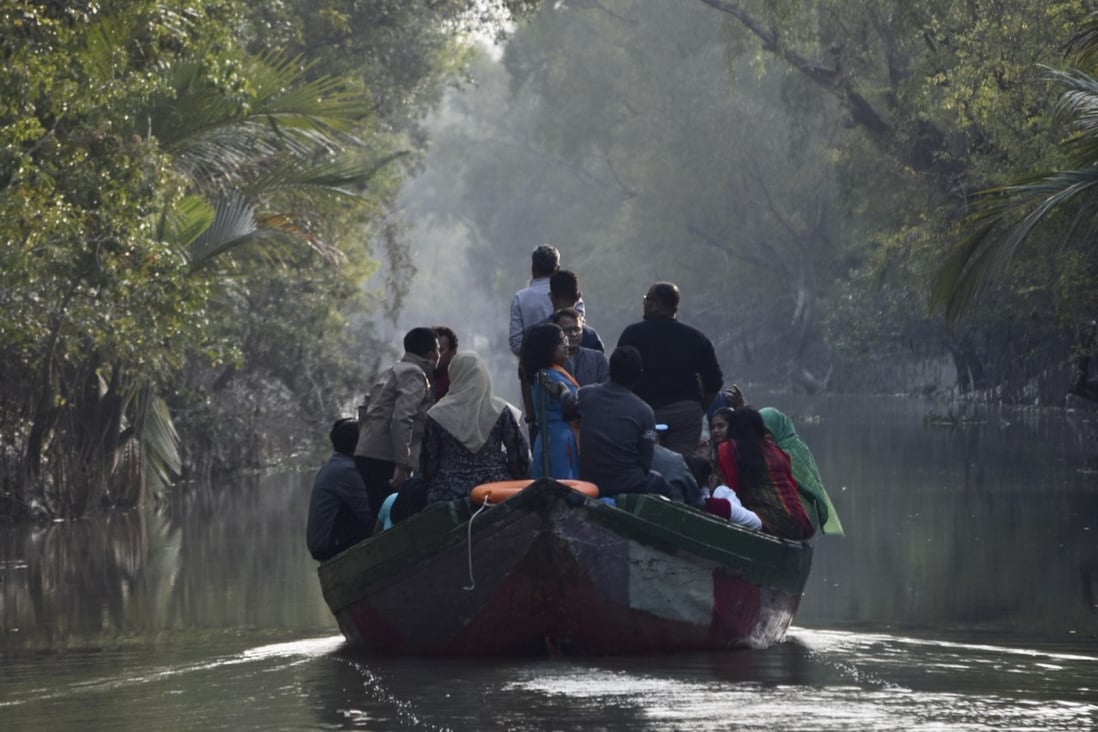 BANGLADESH - When it comes to Sundarbans, it is difficult not to speak in superlatives. The world’s largest mangrove forest covers 10,000 square kilometres (3,860 square miles) of the world’s biggest delta, where the liquid juggernauts of the Ganges, Brahmaputra and Meghna rivers discharge into the Bay of Bengal. Straddling southern Bangladesh and eastern India, the Sundarbans’ labyrinthine tidal waterways, mudflats and islands of silt are stalked by Bengal tigers; enormous estuarine crocodiles that patrol the opaque rivers; and ferociously clawed monitor lizards that drape themselves along tree branches, their tails dangling like a dinosaur’s might down to the water below. BANGLADESH - When it comes to Sundarbans, it is difficult not to speak in superlatives. The world’s largest mangrove forest covers 10,000 square kilometres (3,860 square miles) of the world’s biggest delta, where the liquid juggernauts of the Ganges, Brahmaputra and Meghna rivers discharge into the Bay of Bengal. Straddling southern Bangladesh and eastern India, the Sundarbans’ labyrinthine tidal waterways, mudflats and islands of silt are stalked by Bengal tigers; enormous estuarine crocodiles that patrol the opaque rivers; and ferociously clawed monitor lizards that drape themselves along tree branches, their tails dangling like a dinosaur’s might down to the water below.A visit to this wild place, however, inspires not only awe at its primordial might, but also awareness of its fragility. Like the tides that are so dramatic here that about a third of the land disappears and reappears every day, or the islands of silt that build up over months only to be washed away in a flood, the Sundarbans evokes the feeling that it could at any minute just slip away. Nowhere is this impression of sliding between states as strong as at the very end of the delta, where the land gives way to the open sea. OCEANA Blue Carbon Lab trials novel mangrove restoration methods
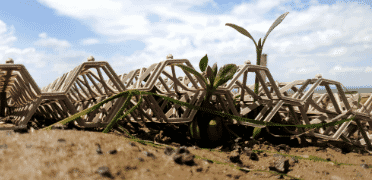 AUSTRALIA - Research into using biodegradable structures to enhance the growth and survival of coastal wetland species, such as mangroves, is currently being undertaken by scientists at Deakin University's Blue Carbon Lab. The structures, made from potato starch, have been deployed at Australia’s Port Phillip Bay and Western Port Bay. They are designed to provide seedlings with protection from high-energy environments without limiting their growth. They break down over time, making way for the established plants to thrive. Coastal wetlands, such as mangrove forests and saltmarshes, provide many benefits including protection from storm surges, and habitat for coastal wildlife. They also store atmospheric carbon, acting as a nature-based solution against climate change. However, coastal wetlands have been degraded and lost around the world and restoring them can be challenging. Dr Stacey Trevathan-Tackett, from the Blue Carbon Lab, says that restoration efforts can be hampered by harsh environmental conditions that damage wetland plants at crucial early stages of their growth and so it's important to constantly come up with new methods to encourage growth. AUSTRALIA - Research into using biodegradable structures to enhance the growth and survival of coastal wetland species, such as mangroves, is currently being undertaken by scientists at Deakin University's Blue Carbon Lab. The structures, made from potato starch, have been deployed at Australia’s Port Phillip Bay and Western Port Bay. They are designed to provide seedlings with protection from high-energy environments without limiting their growth. They break down over time, making way for the established plants to thrive. Coastal wetlands, such as mangrove forests and saltmarshes, provide many benefits including protection from storm surges, and habitat for coastal wildlife. They also store atmospheric carbon, acting as a nature-based solution against climate change. However, coastal wetlands have been degraded and lost around the world and restoring them can be challenging. Dr Stacey Trevathan-Tackett, from the Blue Carbon Lab, says that restoration efforts can be hampered by harsh environmental conditions that damage wetland plants at crucial early stages of their growth and so it's important to constantly come up with new methods to encourage growth. Like this newsletter?  Pease consider donating to MAP to keep it going. Giving could never be easier *Articles in this newsletter may mention practices being used and/or show exagerated results being claimed without proof. Stories are presented here in effort to show mangrove related activity around the world and do not necessarily reflect Mangrove Action Project's views or mangrove restoration best-practices. NOTICE
ACTION ALERTSEcuador: Stop land grabbing and racial discrimination for palm oil! SIGN THE PETITIONUGANDA Stop criminalizing pipeline protesters! SIGN THE PETITIONSave Endangered Species From SpaceX
|
|
|
Mangrove Action Project Click here to view past newsletters
|
|
-
The community of adults and youth in Cayman Islands has come together recently to release a series of educational videos. Each is geared to...
-
By Alfredo Quarto, Program & Policy Director Co-founder, MAP There is a rather urgent situation concerning the bio-invasion of the Son...
-
By: Isabel Robinson, MAP Volunteer Intern Some months ago I decided to come to Thailand and do an internship in mangrove conservation, ...
MAP News Issue #596 = April 20, 2024
ENTRIES NOW OPEN! Mangrove Photography Awards 2024 10 Years Celebrating Mangroves GLOBAL - MAP has launched our 10th Mangrove Photograp...





